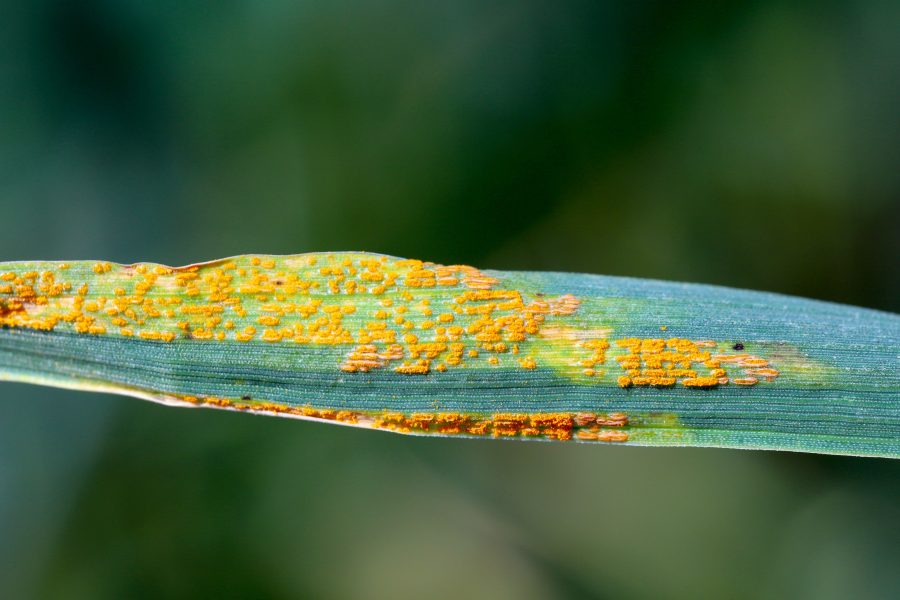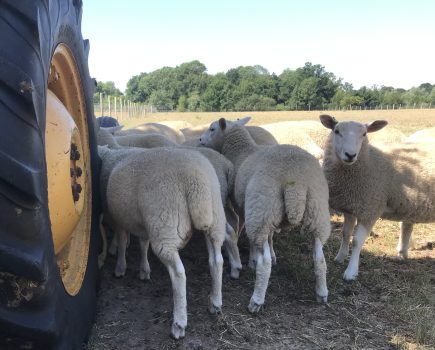What a contrast to last year this spring has been so far. With just six millimetres of rain since the beginning of March and a plethora of cold nights, both septoria and brown rust pressure are reassuringly less prevalent as I write this in mid-April. Unlike in 2024, the main disease of note so far has been yellow rust, particularly in late October/November sown wheats, writes Peter Cowlrick, Technical director, CCC Agronomy.
Previous seasons, however, offer salutary reminders of what can happen later in the season, and as recently as 2022 a dry early season was followed by a wet late May/June, resulting in significant lower leaf loss and subsequent yield reductions due to the impact of septoria where fungicide programmes were not robust enough.
With regards the all-important flag leaf (T2) fungicide options, programmes will be influenced by a combination of variety and sowing date, with the latter a key consideration this season, when over half of the winter wheat crops here in the south were drilled from late October.
For crops sown from late September through to mid-October, adequate septoria protection to cover both the flag and leaf two is essential, with product choice also accounting for other varietal disease weaknesses such as brown rust; there are a number of excellent combinations of actives available that offer robust disease control, such as the SDHIs Pydiflumetofen (Miravis + Era) and Isoflucypram (Vimoy + Proline et al), along with the picolinamide Fenpicoxamid (Univoq/Jessico One et al) all of which need partnering with a triazole (eg Prothioconazole or Mefentriconazole). Don’t be tempted to skimp on rates as maintaining green leaf area on the top two leaves is critical to optimising yield potential, with T2 fungicide inputs typically delivering around 60% of fungicide yield responses.
If brown rust pressure is a concern, then adding in a strobilurin (eg Azoxystrobin or Pyraclostrobin) could be an option. Consider increasing water volumes and using fan jets to improve spray coverage, as all fungicides are acropetal (move towards the leaf tip), and poor spray coverage at the leaf axil (particularly leaf 2) is often obvious later on with disease reinfecting this area.
Although later-sown (end October/November) crops are likely to be carrying considerably lower levels of septoria inoculum, the T2 fungicide is still the most important timing with regard to protecting the upper leaves, even if the lower canopy looks clean; similar combinations of actives should still be considered, but against a backdrop of both lower yield potential and disease pressure slightly lower rates can be considered. If yellow rust has been previously active in the crop, then ensure that this is adequately covered.
Where possible, and if budgets permit, the addition of protectant chemistry (such as Folpet) to T2 fungicide programmes typically provides around a 0.3t/ha return on investment and will help protect the systemic fungicides as an anti-resistance strategy. The flag leaf timing is also important at reducing inoculum pressure from the ear-colonising fungal species (eg fusarium and michrodochium), with Prothioconazole playing a key role in this, and Pydiflumetofen (Miravis) appears to have a useful additional benefit of reducing inoculum pressure ahead of ear emergence, which could be particularly useful in managing fusarium risks in crops following maize.







